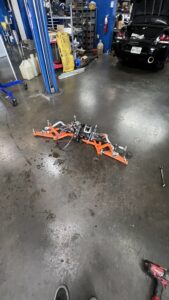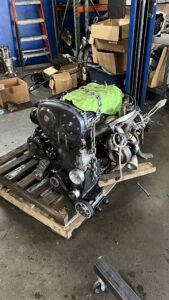3/18/2024 – Orange Racecars and burnouts
These past two weeks have been filled with excitement at UMS Tuning.


Monday the 4th was very casual and simple for me. I replaced a low pressure power steering line on a Toyota truck, and helped Brendan start to put headers on a Dodge truck.
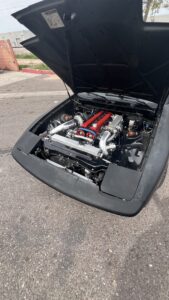
Wednesday the 6th was a day to remember at the shop. To start my day, I was told to take off a MK3 Toyota Supra with a 2JZ swap in it. It was a 9-year project by a friend of Tony, the owner. I was in the process of putting wheels back on, and I was told by the owner to swap the front wheels to the back, which I found odd. I followed through with swapping the wheels and pulled the car out onto the street to get loaded back on a trailer. The reason they put the old tires from the front to the back was to have burnout tires, since he wanted to do a burnout before he left. He did a gnarly burnout and put the car into limp mode since it got so hot during the burnout. The friends he brought with him thought he broke the car, but it was just a safety mode to not hurt the engine.
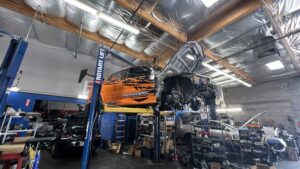
Later that day, I helped Ulrik, Tony’s son, put an engine in a purpose-built race Evo. This Evo, named Denken, is said to be worth about $300,000. Just to add to the absurdity of the car, the owner bought a bolt kit for the entire vehicle, and it was made out of titanium. All of us workers were joking around and trying to guess how much he spent on the kit, and we think it’s more than $3,000 for bolts…

Ulrik and I first had to take the subframe out of the car. It was a simple process, just removing a couple of bolts attached to the body itself and two bolts that connect to the front struts, then the subframe drops out. The next step was to assemble the engine, transmission, and transfer case together. I watched Ulrik put all the components together, torqued them to spec, and marked them with paint. We used the famed titanium bolts, which truly felt weightless compared to the original bolts. Installing the transfer case was the most challenging part since it wouldn’t align and slide into the transmission very easily. A transfer case is used to distribute power to the front and rear axles, splitting the power from the transmission.

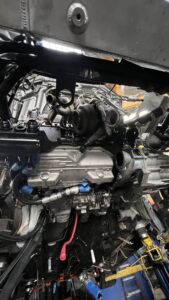
The next step was to install the engine. The engine had been assembled on a pallet, allowing it to be easily slid across the floor to the correct position. The car on the lift was then lowered to meet the engine on the ground. It involved a lot of micro-adjustments, but overall, it was easy to do. We installed the engine towards the end of the day, so all the workers were joking around while we were working, which lightened the mood.
Monday the 11th, UMS was closed since Tony, Ulrik, and Cuban (the general manager) went to Texas to race on Circuit of the Americas for the weekend.
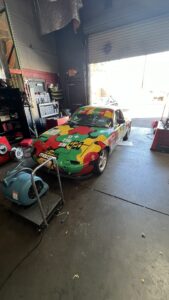
Wednesday the 13th was much more involved. I had the opportunity to drive a Miata racecar on the dyno since Tony couldn’t fit in the tiny car. I expected driving a car on the dyno to be challenging, but it was actually very straightforward. Since it’s not a rolling dyno, there’s no need to go through gears 1-3, and I can go straight to 4th gear. Most cars get dyno’d in 4th gear since it tends to have the closest ratio to 1:1, providing the most reliable horsepower number.
Driving the car is simple. I put the car into 4th gear and let out the clutch until the car feels like it’s about to stall, then add a bit of gas. The car hooks up, and the dyno adds load to the differential until the RPM hits 1500, then I floor the gas. The dyno holds the RPM at 1500 and then releases the brakes, allowing the engine to rev up to the rev limiter. Tony can adjust the run time to have the engine take anywhere from 3 to 15 seconds to go from 1500 RPMs to the 7000 RPM rev limit. Increasing the run time provides a more detailed graph of the horsepower and torque created.


